HOME | home
Iron on the Hearth | Iron, Cast and Forged | Cast Iron Cooking 4 | Copperware | Copper and Brassware 2 | Brass Alcohol Stove | Pipe Smoking | Tobacco the Indian Weed | Women's Pipes | Clay Pipe Collection | Pipes2 | pipes3 | Pipes4 | Pipe Tampers | Early Lighting 1 | Early Lighting 2 | Early Lighting 3 | Early Lighting 4 | Early Lighting 5 | Early Lighting 6 | My Lamps | Center Draft Lamps | Center Draft Lamps II | Center Drafts III | Miners lamps | Matches and Match Safes
Center Draft Lamps II
Plume & Atwood
The Banner # 3
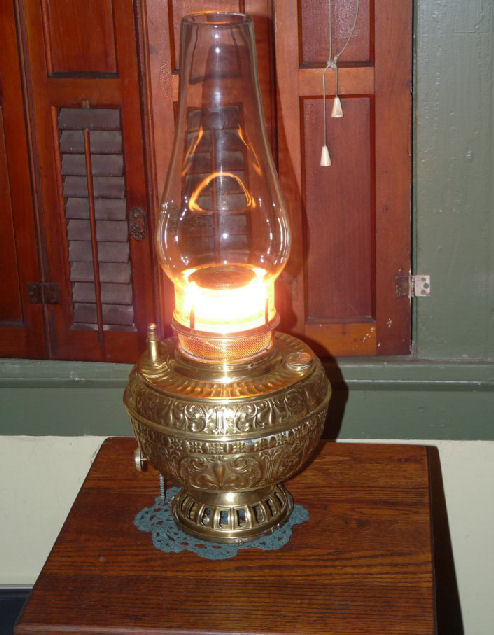 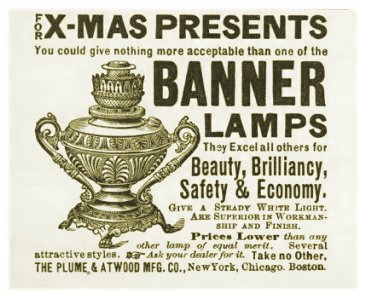 Fostoria Parlor Lamp with P & A components
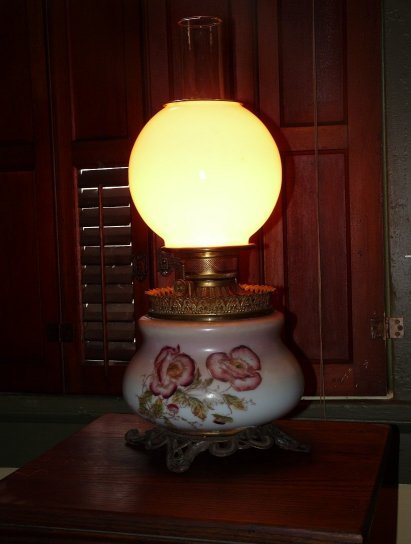 This Fostoria Lamp has a oil pot and burner made by Plume & Atwood. They used Royal burners in their lamps.
(white globe shade not original) This lamp most likely had a matching shade with roses like the base.
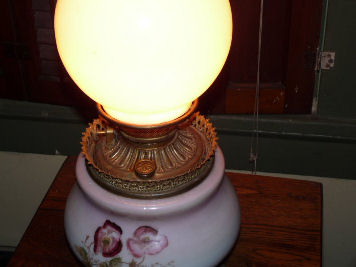 |
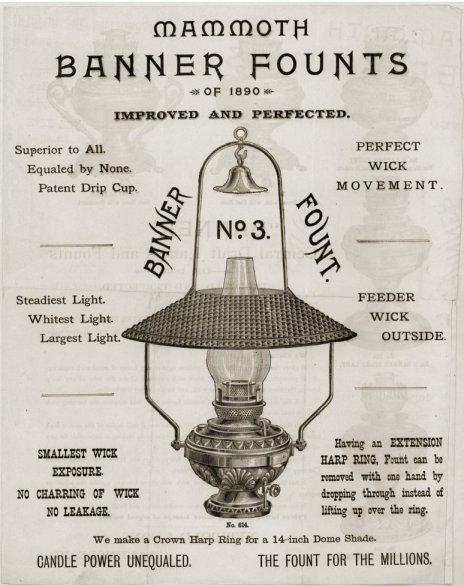
These were most often used in large spaces such as stores.
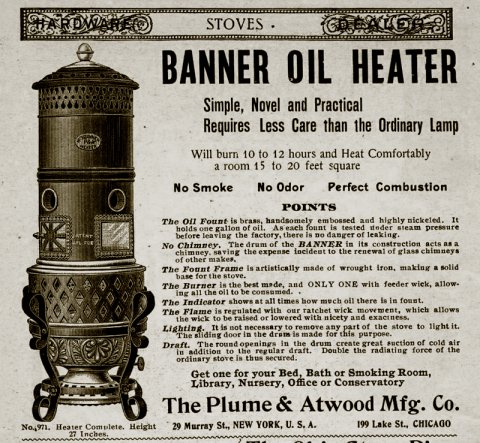
Plume and Atwood adapted the Banner lamp into a nice little kerosene heater.
These are almost oderless when kept clean.
More on Center Draft Lamps
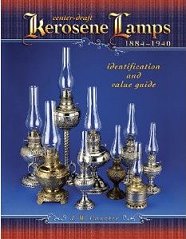 I recommend this book to learn more about Center Draft Lamps:
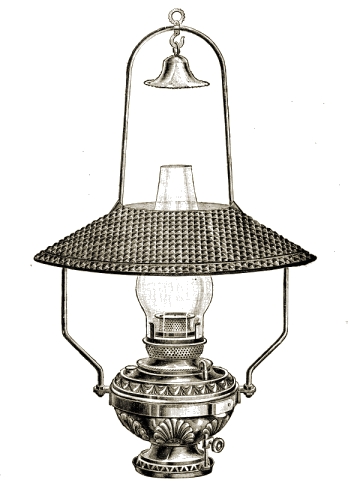 Center-Draft Kerosene Lamps, 1884-1940 (Identification and Value Guide)
by J Bill W. Courter
Center-draft Kerosene Lamps, 1884 - 1940, identifies over 165 brands of lamps and their manufacturers. The leaders, such as Bradley & Hubbard, Edward Miller, and Plume & Atwood, major manufacturers during the 1890s, are familiar names to collectors. However, Chicago Lamp, Craighead & Kintz, Hipwell Mfg., Meriden Bronze, Meyrose, Shaffer Lamp, and St. Louis Electric Co. also were important manufacturers of center-draft lamps found by collectors today. The book gives brief histories of 50 American companies, lists selected patents, and pictures representative lamps. Some 150 companies are linked in the book, beginning the exploration of the kerosene era of open-flame, center-draft lamps. 2008
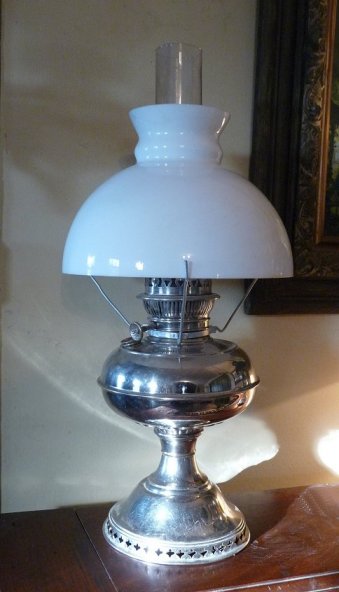 This is a well used Rayo my husband restored to working order for me.
These were made by Bradley and Hubbard for Standard Oil
It is another center draft lamp that gives off a strong white light.
The Rayo Lamp was manufactured by the Bradley & Hubbard Mfg. Co., in Meriden, CT. The flame spreader’s first patent is Nov. 30, 1894, then called “Perfection” which were initially made under contract with the Standard Oil Co. I have read at one time a free Rayo could be had if you bought 15 gallons of Standard Oil kerosene. They also were given free with some offers of The Perfection Kerosene cook stove. The Trademark for the name RAYO remained active under Eastern Standard, Esso, Humble Oil and lastly Exxon Corp. until 1988! B&H also began to advertise and sell the Rayo to retailers like Montgomery Ward. The lamps main purpose was to help Standard Oil sell kerosene. The lamp was solid brass throughout and nickel plated for easy care. In 1911 they were $48.00 dozen with shade tripod. The Rayo is a round wick central draft lamp not unlike the lamp makers, such as Pittsburgh Lamp, Plume & Atwood, Rochester, Edw. Miller, etc. The Rayo needs 30 minutes to an hour to warm up fully and produce its strongest light. Then the flame can be turned up high.
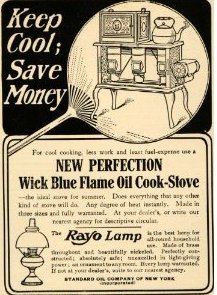 References
The Plume And Atwood Manufacturing Company Illustrated Catalogue Of Kerosene Oil Burners, Gas and Oil Lamp Trimmings Lamps Oil Heaters Etc (Catalogue No 9, B)
Center-Draft Kerosene Lamps, 1884-1940 (Identification and Value Guide)
by J Bill W. Courter
The Rushlight Club -International Association of Collectors & Students of Historic Lighting
The International Guild of Lamp Researchers -wonderful place to learn more.
Be Back Later- lamp forum packed with great information.
*Special thanks to Mike Moore for his help with research and images.
|
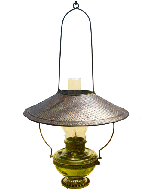
Copyright 2011 , Jim & Beth Boyle, All Rights Reserved
No part of this website may be used for any purpose ( including using images )
without written consent from The Rams Horn

